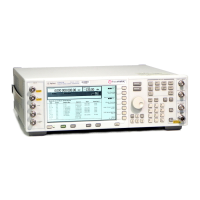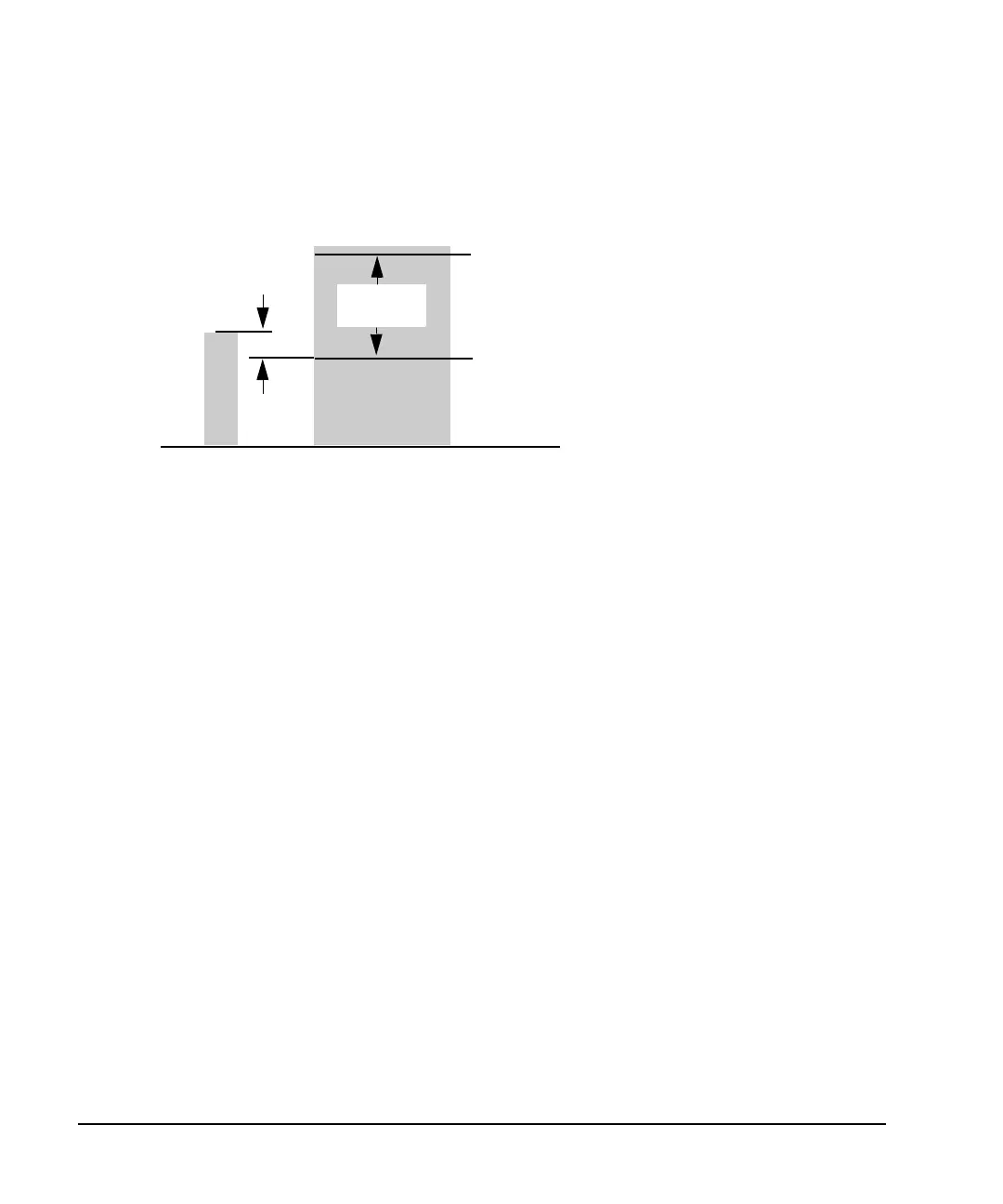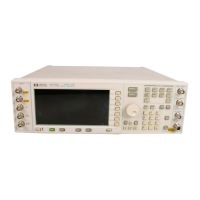458 Chapter 16
W-CDMA Uplink Digital Modulation for Receiver Test
Understanding the PRACH
Figure 16-9 Data Part Power Determining Message Part Power
The message part power calculation is explained in the following section, “Message Part Power”.
Message Part Power
As stated earlier, the message part power (dBm) is comprised of the control part and data part power levels.
The message part power is calculated using the sum of the linear power values for Data
dBm
(data part power)
and Cntl
dBm
(control part power). Use the following formula to calculate the message part power:
10 Log[10
(Data dbm / 10 + (-3))
+ 10
(Cntl dBm / 10 + (-3))
]
By adjusting the two power levels, you can make the message power less than, equal to, or greater than the
preamble power. In some situations, the message part power can exceed the carrier power. When this occurs,
the ESG will automatically adjust its carrier power, up to its limits, to accommodate the new message part
power. The following examples demonstrate some of the ways you can set the message part power:
Example 1:
This will result in a control part power level that is always 5 dB higher than the preamble therefore making
the message part power 5 dB higher than the preamble.
Preamble Power: -40 dBm Pp-m: 5 dB Ctrl Beta: 15 Data Beta: 0
Pp-m
Message Part Power = −25 dBm
Preamble
Data Part Power = −25.46 dBm
Control Part Power = −35 dBm
9.54 dB
Difference
−30 dBm
−5 dBm
(control part power (watts) + data part power (watts))
(Cntl
dBm
= Pre
dBm
+ Pp-m)
(Data
dBm
= Cntl
dBm
+ Pwr
diff
)

